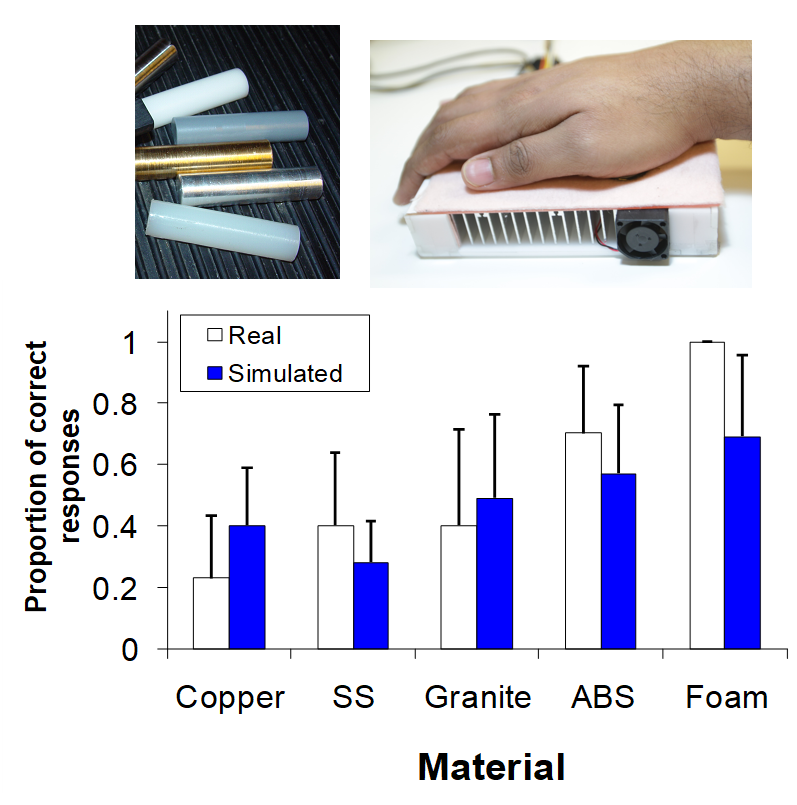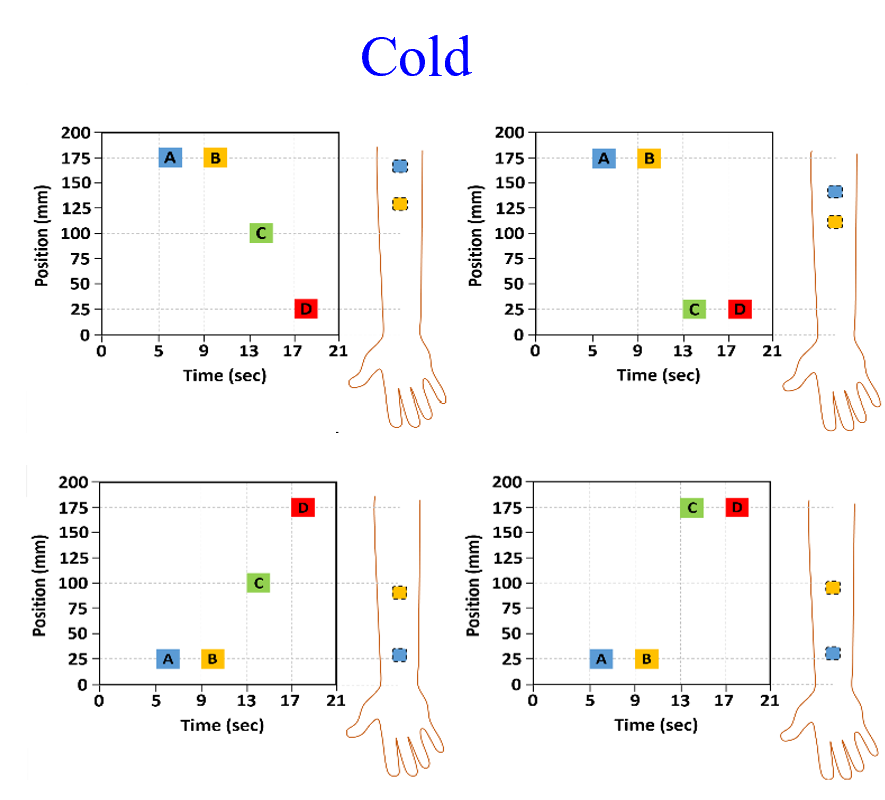Thermal displays based on Peltier devices have been built to simulate the changes in skin temperature that occur when the hand makes contact with an object. The objective of these displays is to present thermal cues to the hand that facilitate object recognition in virtual environments or in teleoperated robotic systems. We have shown that the ability to identify and discriminate between materials based on thermal cues presented via the display is similar to that achieved using real materials. Evaluation of these displays has involved both psychophysical and physiological studies so that the models implemented can be rigorously evaluated.

Identifying Real and Simulated Materials
The thermal sensory system differs in many ways from the sense of touch particularly with respect to spatial and temporal processing. For example, when a larger area of skin is heated or cooled the stimulus is not perceived as being bigger but as more intense. Thermal spatial acuity is markedly inferior to tactile spatial resolution. However, the pervasive belief regarding the poor localization of the thermal senses was brought into question by our finding that the spatial and temporal interactions that characterize the tactile senses also occur for thermal stimuli. We have demonstrated that the perceived location of a thermal stimulus can be made to change as a function of the temporal interval between successive thermal stimuli.

Perceived Location of Cold Stimuli
We are exploring whether thermal interfaces can be used to enhance user interactions with digital media or be incorporated into multisensory displays. For this purpose, thermal patterns have been created by varying the direction, amplitude and rate of temperature change. Small sets of these thermal icons can be readily identified with little training. There are differences in performance depending on whether the thermal display is in contact with the wrist, the palm of the hand or the fingers, with the latter site demonstrating the poorest performance. This research also entails developing models of the thermal interaction between the thermal display and the skin so that the icons can be optimally designed.

Cold and Warm Thermal Icons